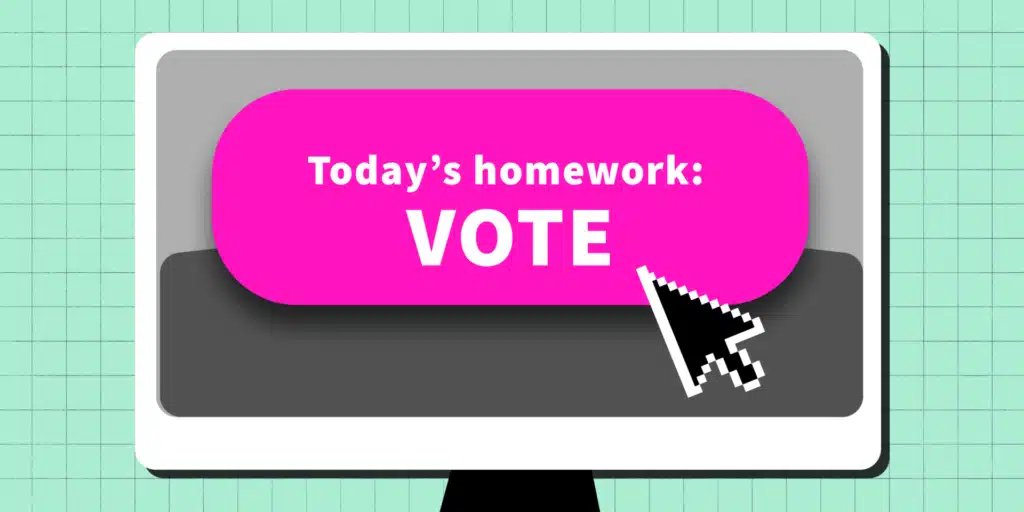Engagement, assessment and collaboration were all put to the test starting in March 2020 and beyond. But after more than a year of teaching online, many have realized the benefits that came with virtual course delivery. The additional flexibility and the ability to respond to student needs in a more timely manner (think virtual office hours) are just two examples.
Emergency remote teaching continues to teach many educators a great deal about empathetic, flexible and engaging teaching. Here are five teaching strategies that emerged this past year that you’ll want to embrace in your hybrid course.
1. Give students different ways to participate
In many ways, online learning made students feel more comfortable participating in class. That’s because platforms like Zoom offered a back channel for professors or teaching assistants to informally answer questions or clarify concepts live before moving on. These back channels, which mimic instant messaging or texting, levelled the playing field—especially for those less likely to come off mute to ask a question in front of the class.
Anonymous back channels have even proven to stimulate more discussion, particularly among students in large introductory courses. Perry Samson, an atmospheric science professor at the University of Michigan, realized the benefits of anonymized back channels after seeing a 50 percent increase in the number of questions he received in his blended class. Notably, female students and those who self-identified as first-generation began to ask questions at the same rate as the rest of the class. Human sexuality professor Matt Numer at Dalhousie University also relies on Top Hat’s anonymous discussions to host sensitive conversations without requiring students to speak out in front of their peers.
2. Consider swapping print for digital interactive textbooks
The pandemic made many educators re-consider the efficacy of print textbooks. With some campus libraries placing their print materials in quarantine in between loans, paired with the increased financial strain on students due to cutbacks in employment and caretaking responsibilities, digital versus print is hardly a debate anymore. Unlike print, digital interactive textbooks give students an up-to-date, timely learning experience. At a time when students are increasingly questioning the value of their higher ed investment, offering an engaging and relevant learning experience is a must. This principle translates to homework especially, which can help motivate students outside of the classroom. And here’s why.
Generation Z are digital natives. That means consuming bite-sized content on their devices, whether through an audiobook or interactive ebook, is a much more enticing bet than picking up a physical textbook. From a content perspective, students who see themselves represented in the material or who see contemporary news events reflected are more likely to complete their readings.
3. Pick your teaching tools wisely
Over the course of the last year, most of us experienced the effects of Zoom fatigue. Students especially weren’t satisfied with switching back and forth between three or four platforms to complete assignments, instant message their peers or post on a discussion board. In a Top Hat survey of 3,052 college students, 84 percent said it was important for them to access learning materials, lectures, assignments and more in one place when in-person learning resumed.
In the semester ahead, try to make data-driven decisions behind the tools you adopt. Alternatively, evaluate a tool that integrates with your learning management system (LMS). Your LMS will serve as a repository for your course data, while a classroom management system will offer the engagement and collaboration capabilities to aid you in your course delivery.
4. Re-think your high-stakes assessments
Pre-COVID, you may have had a midterm and final exam that made up close to half of students’ final grades. Over the last year, many educators removed one or both of these assessments and opted for a series of low-stakes assignments throughout the semester. Don’t be quick to revert back to your two major assessments this fall.
The benefits of regular, lighter pulse checks are three-fold. As a professor, you’ll be able to support struggling students earlier and help them get back on track after the first one or two assignments. Students will also appreciate the support early on versus halfway through the term. Second, regular assignments reduce the pressure to perform. After all, getting a less-than-average grade on a small quiz or case study is much less of a worry than on a midterm exam. Some educators have even removed grades altogether in the form of ungrading—an empathetic move that favors reflection and feedback over letter grades. Finally, students appreciate variety in how they’re assessed: complement an essay with opportunities for hands-on learning or a real-world case study.
5. Complement live lectures with recordings
For professors and students alike, one of the major benefits of online learning was the additional flexibility in where and how learning took place. For example, international students or those unable to attend live classes were able to enjoy viewing recorded lectures from the comfort of their homes. This mode of learning came with academic benefits as well: research shows that when videos are used as a supplement to in-person instruction, students experience greater learning gains.
Whether you’re preparing to teach online or in person this fall, continue giving students the flexibility to structure their learning accordingly through lecture recordings—it’s what 75 percent of students want this fall. If you’re teaching exclusively in person, consider using screen recording software like Loom to record your presentation live. After class, upload the recording to your LMS for students to view at their leisure.
In Top Hat’s latest student survey, 3,052 post-secondary learners share what they need to thrive this fall. For the full list, download the report here.


